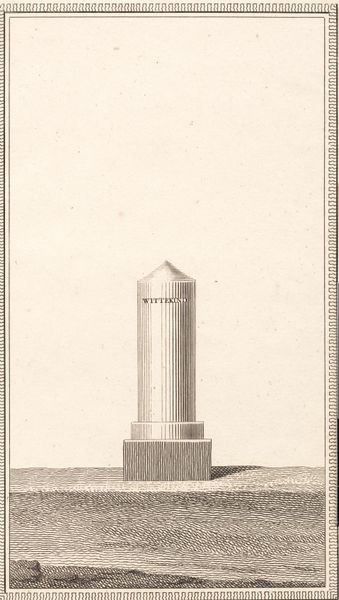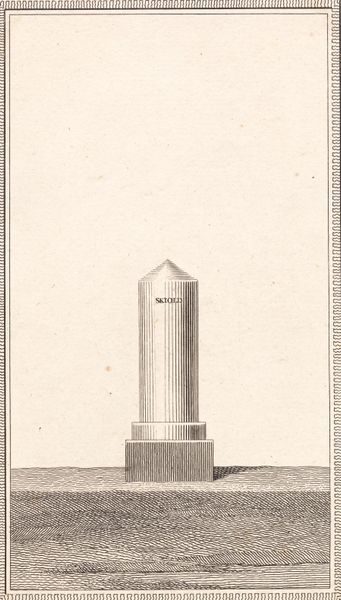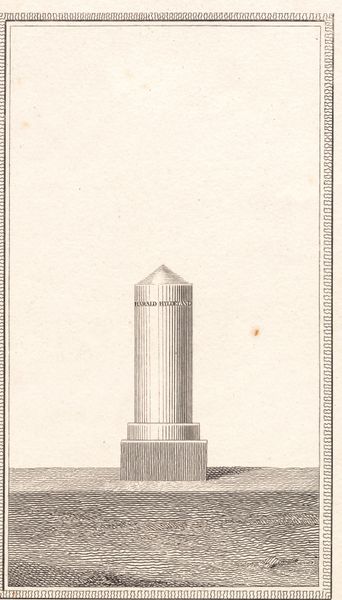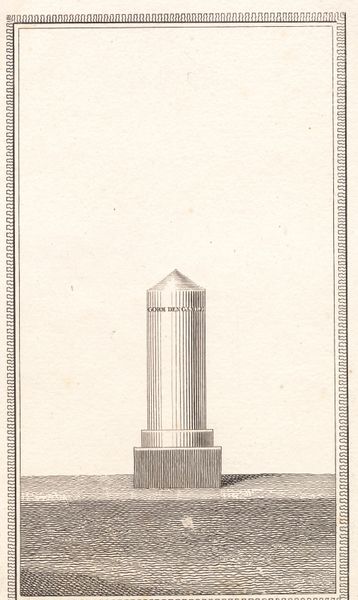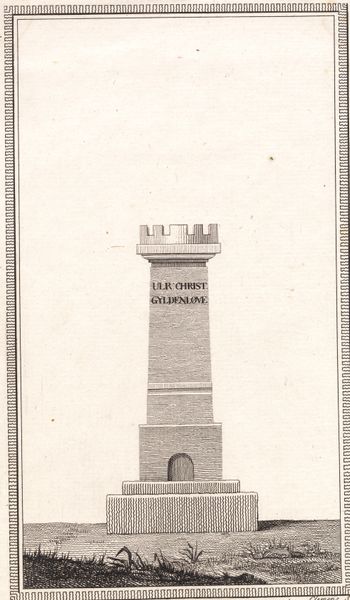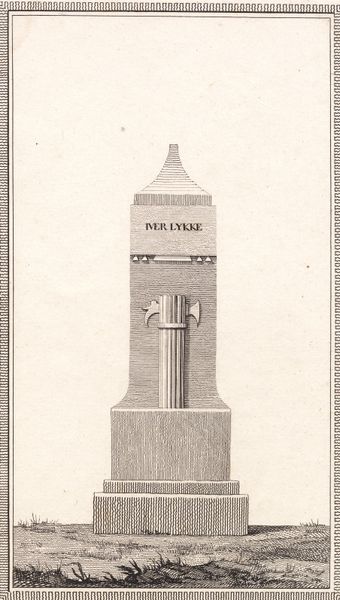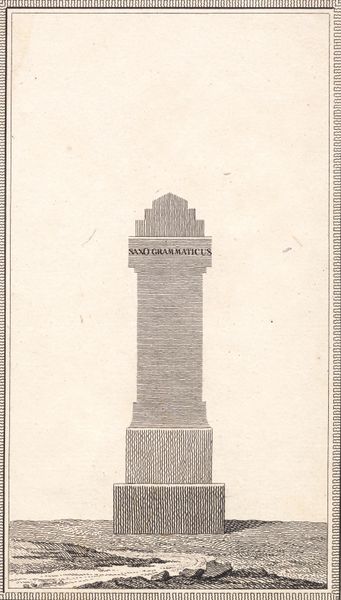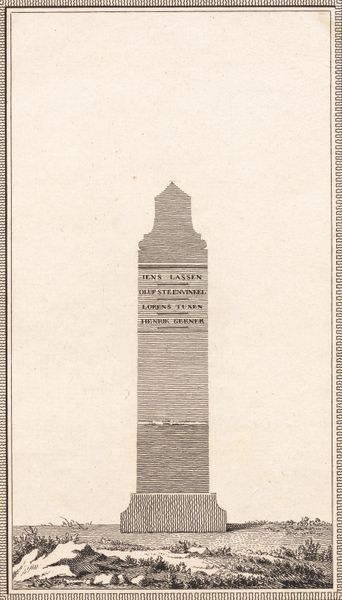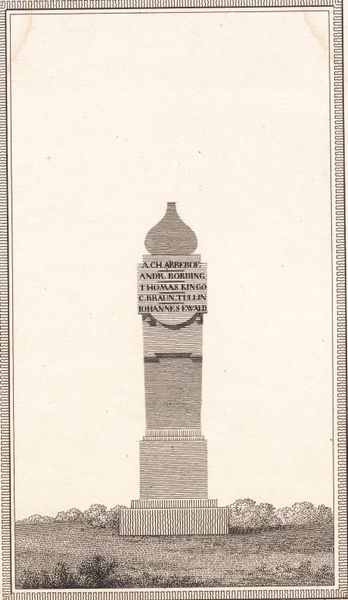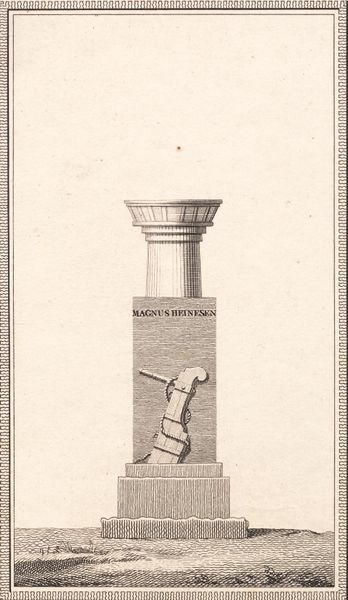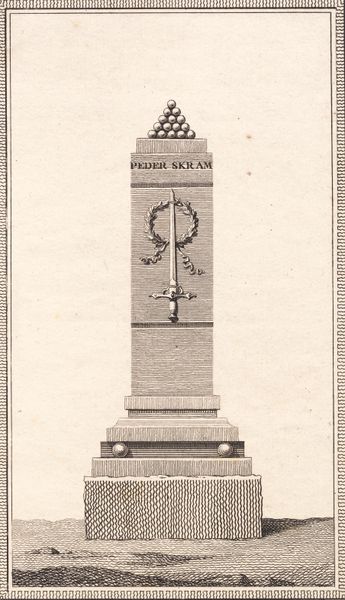
print, etching
#
neoclacissism
# print
#
etching
#
landscape
#
geometric
#
history-painting
Dimensions: 179 mm (height) x 103 mm (width) (billedmaal)
Curator: This is J.F. Clemens's "Dan Mykilati," an etching from around 1779 to 1781, currently housed at the SMK, the National Gallery of Denmark. Editor: It's strikingly austere, isn't it? The column looms rather stark against all that empty space. What kind of stone would they have used for such a massive structure? Curator: Considering the historical context and prevailing aesthetic values of Neoclassicism at the time, Clemens aimed to emulate an elevated simplicity reminiscent of Greco-Roman ideals in this memorial. Etching lent itself well to the production of austere history-paintings, intended for a growing educated class Editor: Absolutely, there's that neoclassical aspiration. The engraving brings the starkness of the column into sharper focus and makes you contemplate the laborious process of hewing, transporting and erecting a column like this with hand-tools. The geometric precision is impressive. Did such monuments serve particular functions in the social order, other than just a celebration of achievement? Curator: Yes, definitively! These monuments would celebrate an individuals contribution to Danish society, while re-iterating moral virtues valued by the State. Also, there was no television. Imagery was an important vector in disseminating social messages among a widely dispersed public. Editor: This puts me in mind of funerary monuments. Even though the scene doesn't exactly conjure the traditional burial site, this rendering of the etched material suggests some sort of offering, tribute, remembrance even - despite its simplicity and clear design. It makes the medium into the message. Curator: Indeed. Consider Clemens’ choice of landscape. Rather than present a monument lost in grandeur, this presentation seeks to encourage the development of individual character via geometric simplification. Clemens effectively reduces the symbolic load. Editor: In a way, the choice to showcase the monument within the art piece becomes more potent than any ornamental stonecut. And that the piece's power to convey a complex range of concepts in simple strokes seems so appropriate now. Curator: The column definitely stands for an era invested in visual displays of power. Thanks to these engravings, a wide and geographically diverse Danish public came to expect that their State and the elite individuals recognized within it project authority through this refined austerity. Editor: That almost minimalist impact is quite powerful when you consider all the labour.
Comments
No comments
Be the first to comment and join the conversation on the ultimate creative platform.
